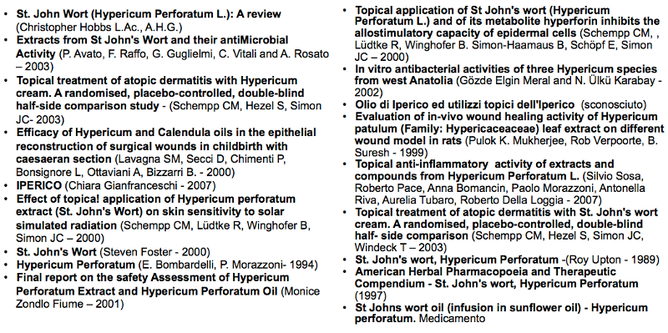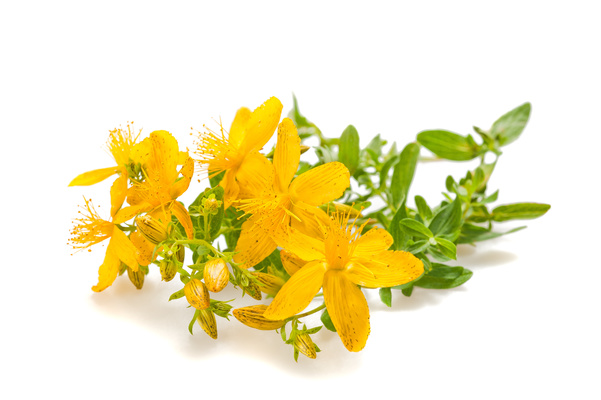NEEM
&
HYPERICUM


Neem tree (nīm) (Azadirachta indica) is a tree in the mahogany family Meliaceae, native to the Indian subcontinent, i.e. India, Nepal, Pakistan, Bangladesh, Sri Lanka, and Maldives. Neem is an evergreen, fast-growing tree, that can reach a height of 25 metres (82 ft) and live up to 300 years.
Neem has been considered a major component in the Ayurvedic tradition for thousands of years.
The ancient Sanskrit texts teach that every part of the tree (leaves, bark, wood, roots, pulp of fruits, flowers) contains substances with medicinal effects.
For this reason in India Neem is also known as the "Village Pharmacy".
The neem tree is so important that several International non-profit organizations, such as the NEEM Foundation, and research network constantly explore and evaluate its features and application fields.
The United Nations has declared Neem as "The Tree of 21st Century".
NEEM TREE PROPERTIES AND BENEFICIAL EFFECTS
Among those highlighted by Neem literature, here after is a list of those characterizing Hyperoil:
- anti-inflammatory
- anti-pyretic
- anti-seborrhoea
- anti-fungal
- regenerative and healing
- immunostimulating
- glucose regulation (prevention of cardiovascular disorders)
- malaria vector control
- anti-oxidant
- insect repellent
- oral cavity disorders inhibitor (teeth and gums)



HYPERICUM PERFORATUM
Hypericum perforatum, known as perforate St John's-wort, or St John's wort, is a flowering plant in the family Hypericaceae. The flowers vary from pale to dark yellow, and from 0.5–6 cm in diameter, with five (rarely four) petals, most having prominent stamens.
St. John's-wort (Hypericum perforatum) has long been used in herbalism and folk medicine, for its medical properties. The red, oily extract of H. perforatum has been used in the treatment of wounds for millennia, including by the Knights Hospitaller, the Order of St John, after battles in the Crusades, which is most likely where the name came from.
HYPERYCUM PERFORATUM FLOWER PROPERTIES AND BENEFICIAL EFFECTS
Among those highlighted by Hypericum literature, here after is a list of those characterizing Hyperoil:
- antiseptic
- tissue regenerative and aiding the reepithelialisation process
- anti-inflammatory


